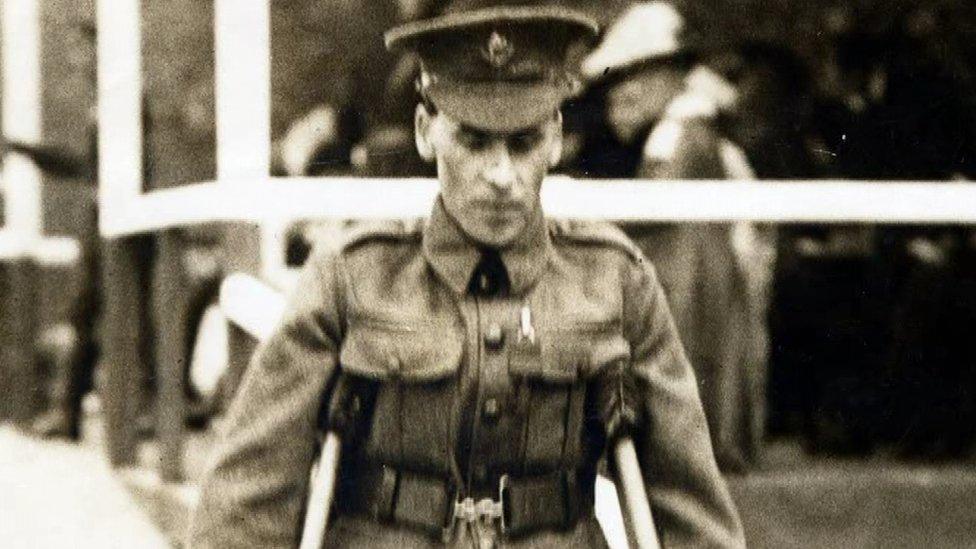Battle of the Somme: 16th Irish Division commemorated in France
- Published
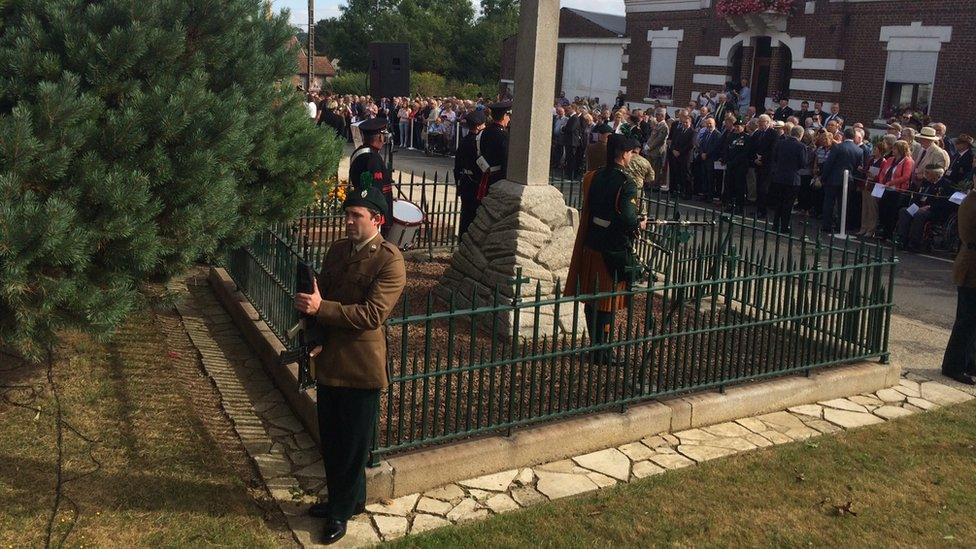
The service was held at the 16th Division's memorial cross in Guillemont
A commemoration has been held in France to mark the centenary of the 16th Irish Division's involvement in the Battle of the Somme.
In addition to a service, schoolchildren read out the names of those soldiers who died and a large shamrock was placed in a field.
NI Secretary James Brokenshire was among those attending the event.
The 16th Irish Division rose to prominence on 3 September 1916 with battles in Guillemont and Ginchy.
It consisted of a range of units, including the Royal Irish Rifles, Connaught Rangers, Dublin Fusiliers and Munster Fusiliers.
About 4,300 men from the division were killed or wounded in the clashes, which lead to the successful capture of the two villages from German soldiers.
Mr Brokenshire was joined by DUP MLA Alastair Ross, the Republic of Ireland's Regional Development Minister Heather Humphreys, the brigadier general of the Irish Defence Forces and other military personnel for a service at the Celtic cross memorial outside the Catholic church in Guillemont.
It was Mr Brokenshire's first visit to the Somme as secretary of state and he had asked to visit Thiepval Wood, from where the 36th Ulster Division made its charge on the 1 July 1916, the first day of the Battle of the Somme.
A total of 19,240 British troops were killed within 24 hours, and almost a tenth of those who died that first day were from the 36th Ulster Division.
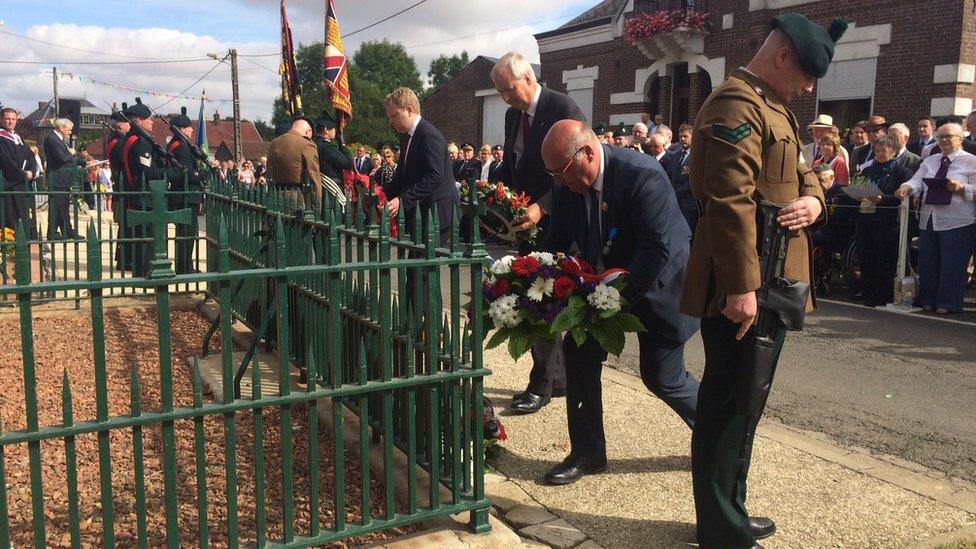
DUP MLA Alastair Ross (far left) laying a wreath at the memorial cross
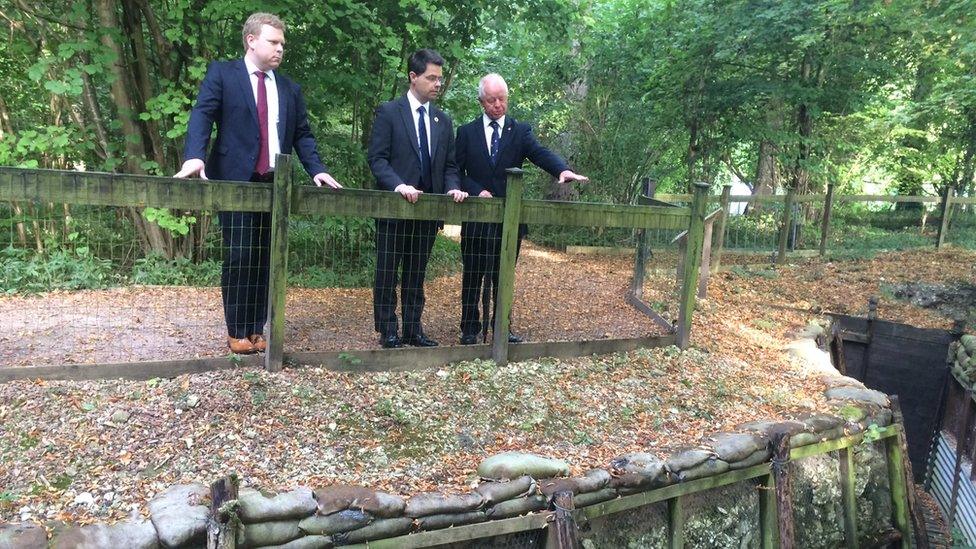
NI Secretary of State James Brokenshire (centre) with DUP MLA Alastair Ross (left) being shown around the trenches in Thiepval Wood

At the scene

By Mervyn Jess, BBC NI reporter
The Royal Irish Regiment and soldiers from the Irish Defence Forces came together to perform a ceremonial cenotaph guard at the memorial to the 16th Irish Division of World War One.
One hundred years ago, thousands of young solders were killed or injured in fighting around Guillemont on the River Somme.
Hundreds of people gathered at the division's granite Celtic cross outside the village's Catholic church.
An Irish Army piper played Limerick's Lament, while politicians from the Republic and the UK laid laurel and poppy wreaths.
Stormont junior minister Alastair Ross of the DUP and Irish minister Heather Humphreys stood along Secretary of State James Brokenshire.
It was an unique occasion in many ways brought about by the need to remember the sacrifices of thousands of young Irish men a century ago.

The 16th Irish Division contained many members of the National Volunteers, which had been formed in 1913 to support Home Rule in Ireland.
National Party leader and MP John Redmond had encouraged them to join. The 6th Royal Irish Regiment had 300 volunteers from County Londonderry, while the 6th Connaught Rangers included about 500 men from west Belfast.
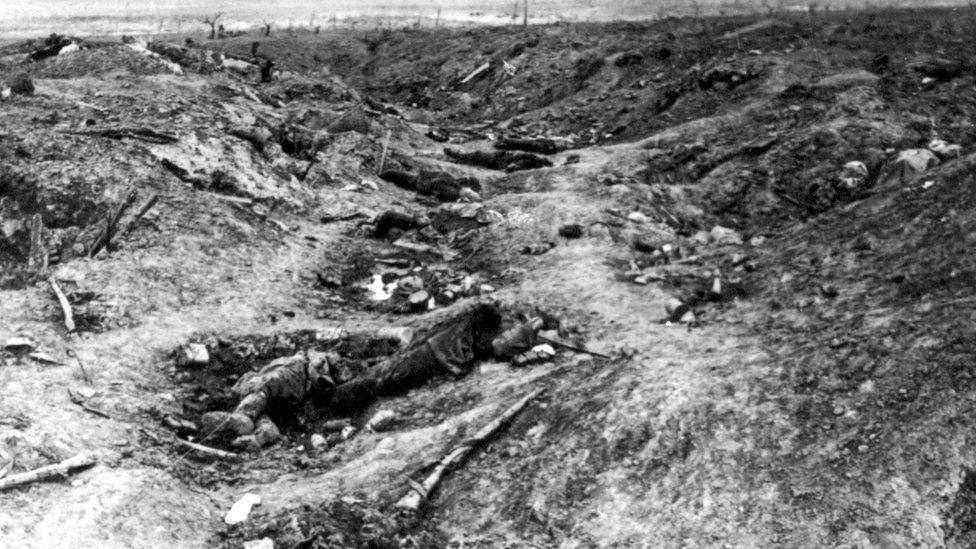
The scene in one of the German trenches in Guillemont
At the end of August 1916, the division had moved from Loos down to the Somme sector.
The attack on 3 September had been postponed several times, partly because of bad weather, but at 06:00 local time, a bombardment commenced.

The grave of an unknown British soldier near Ginchy
The assaults on Guillemont and Ginchy resulted in a brutal casualty rate - about 4,300 men killed or wounded in a six-day period.
The losses were felt even more keenly given the nature and make up of the 16th Division.
They had been volunteers who, in many cases, came from the same streets, worked alongside each other or attended the same church.
For those who survived the Battle of the Somme, and the remaining two years of the war, the Ireland to which they returned was very different to that which they left.
Historian Eamon Phoenix told the BBC: "The nationalist soldiers who came back in 1919 had been cheered on as they left, but in post-1916 Ireland, they were marginalised and ignored, spat upon, airbrushed out of history."
- Published3 September 2016
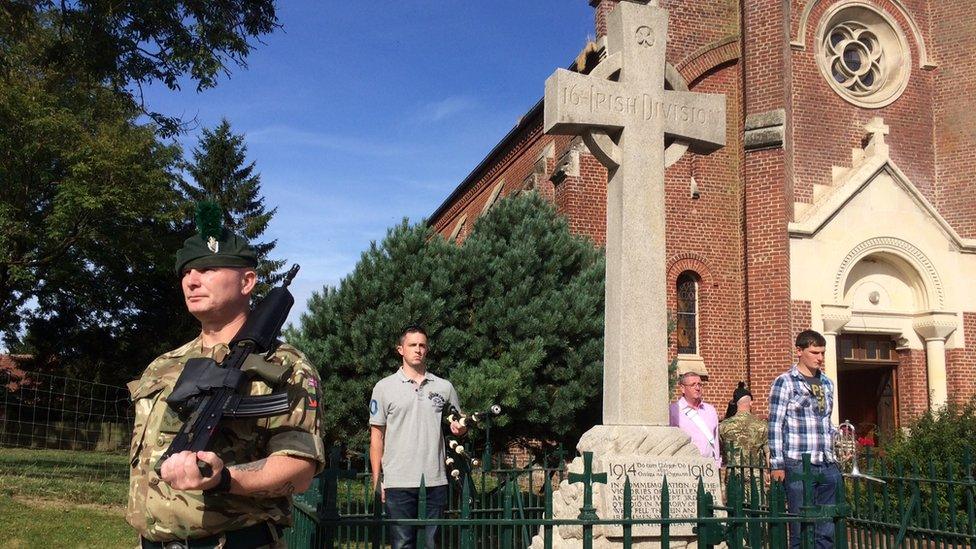
- Published1 July 2016
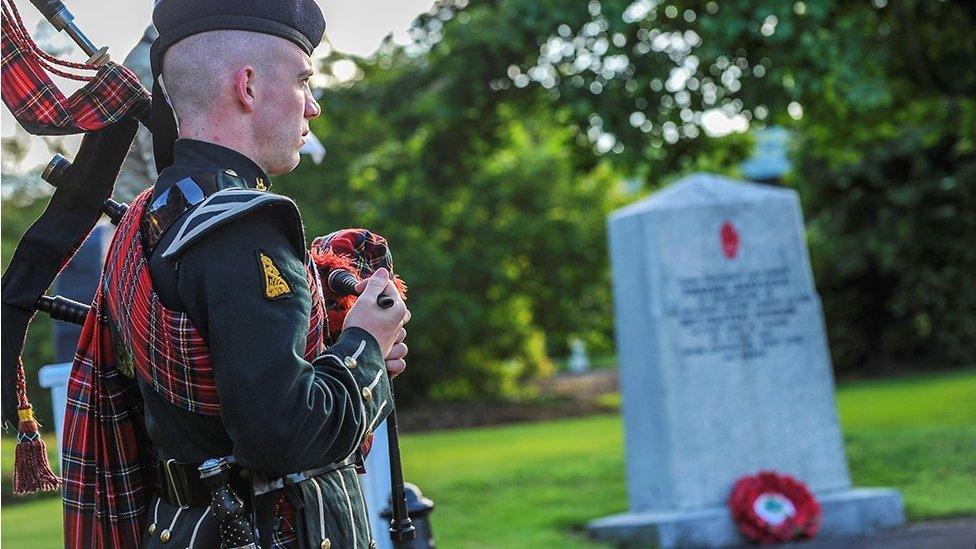
- Published30 June 2016

- Published17 June 2016

- Published4 July 2016
